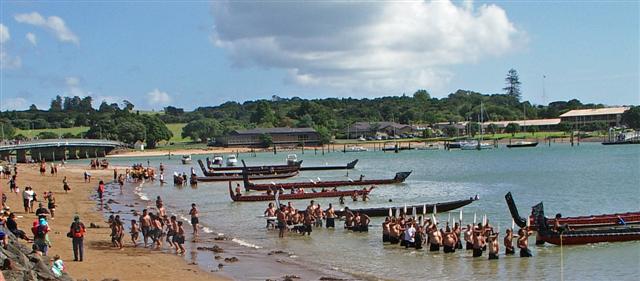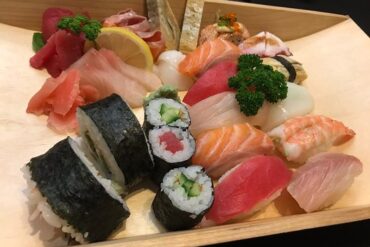The Meaning of Waitangi Day: A Comprehensive Guide for Parents
Hey there, super parents! ? Are you gearing up to teach your little kiwis about one of New Zealand’s most important national days? You’re in the right spot! Waitangi Day might seem complex, but fear not! This handy guide is here to sail you smoothly through its rich history and present-day celebrations, all while you sprinkle your parenting journey with fun learning experiences. ?
First off, let’s unravel the historical tapestry of Waitangi Day. On the 6th of February 1840, the Treaty of Waitangi was signed by representatives of the British Crown and various M?ori chiefs from the North Island of New Zealand. This treaty marked the birth of the nation as we know it today, and here’s how you can explain its significance to your kiddos:
- Waitangi Day is like a birthday for New Zealand: Just like they celebrate their birth, on February 6th each year, New Zealand commemorates its foundation and the partnership between the indigenous M?ori people and the British settlers.
- The Treaty of Waitangi is like a promise: Teach your children that this treaty was like an important pinky promise between the M?ori chiefs and the British. It was about taking care of the land and the people, embracing the diversity of cultures—something that’s still very relevant today!
- Learning from the past for a better future: The treaty’s journey wasn’t all smooth sailing. It’s important for kiddos to understand that, just like in the playground, disagreements happen, and Waitangi Day is a chance to remember that, work on those relationships, and make sure everyone feels respected and valued.
Moving on to the contemporary celebrations, Waitangi Day today is a vibrant mix of solemn remembrance and joyous festivities. It’s a public holiday that’s often marked by family-friendly events like marae (M?ori meeting grounds) visits, cultural performances, and even yummy food festivals. Encourage your kids to engage with the community by:
- Attending local events: Whether it’s watching a waka (canoe) race or participating in a kapa haka (traditional M?ori performance) group, it’s a great opportunity for learning and fun!
- Creating art and crafts: Get those creative juices flowing with some artsy activities that reflect the themes of Waitangi Day. How about a drawing session where they illustrate what they think the treaty signing might have looked like?
- Cooking up some traditional delights: Bond over baking some rewena bread or hangi, discussing the origins of these traditional M?ori foods as you go. It’s a taste-tacular history lesson! ??
One of the coolest things about Waitangi Day is that it’s a living part of New Zealand’s heritage—so it’s really a chance to live history, and not just read about it! When you bring Waitangi Day to life for your children, you help them build a bridge of understanding and appreciation for their country’s unique story. ?
So, fellow navigators of parenthood, let’s dive deeper into the significance of the treaty, how it’s viewed today, and fun ways to instill its values in your young ones. Ready to add a sprinkle of joy to history? Let’s set sail into this journey together! ?
Remember, explaining Waitangi Day to children doesn’t have to be daunting. With a blend of storytelling, fun activities, and open discussions, you’ll help them grasp the true essence of this national day, sewing the seeds for them to grow into informed and respectful citizens of Aotearoa, New Zealand. Stay tuned for more insights and ideas in the following sections as we continue to explore the deep layers of Waitangi Day together. Let’s make this learning adventure one for the history books! ??

Five Things Parents Should Know When Preparing for Waitangi Day
As Waitangi Day approaches, equip yourself with a treasure trove of knowledge and tips to help your family get the most out of this significant day. Here are five key points every parent should know:
1. Understanding the Treaty’s Key Points
Before diving into the celebrations, take a moment to revisit the core aspects of the Treaty of Waitangi. There are three articles within the treaty that facilitated governance, protection, and rights for the M?ori. Ensuring you have a grasp on these concepts will enable you to offer clear and simple explanations to curious young minds.
2. Recognition of the Treaty’s Dual Versions
It’s essential to acknowledge that there are two versions of the Treaty: one in English and one in te reo M?ori, and that differences in their translation have led to historical and ongoing discussions. This presents an opportunity for a lesson on the importance of clear communication and understanding different perspectives.
3. Reflecting on Past and Present
Recognize that Waitangi Day is both a time of reflection on past grievances between the M?ori and the Crown and an occasion to celebrate the progress towards partnership. Discussing with your children how New Zealand continues to grow based on the principles of the Treaty can be incredibly insightful.
4. Embracing Cultural Significance
Encourage your children to appreciate the cultural diversity that the Treaty aimed to protect. Introduce them to M?ori terms, expressions, and customs, which will enrich their understanding and respect for the culture that is core to New Zealand’s identity.
5. Participating Actively in Community Events
Finally, actively engage with Waitangi Day. Whether it’s attending a dawn ceremony, visiting a local marae, or taking part in community arts and crafts, participation can turn a history lesson into a vibrant, unforgettable experience.
With these five points in mind, prepare to help your family embark on an educational journey filled with cultural appreciation and community engagement on Waitangi Day. Embrace the traditions and events in your local area, or even craft your own family customs to honor the significance of this day. It’s the perfect time to nurture the values of unity, respect, and knowledge in the next generation of New Zealanders!
Bringing The Story To Life: Interactive Learning On Waitangi Day
As we move closer to the big day, think about turning the history of Waitangi Day into an interactive adventure for your children. Here are some ingenious ways to make the day not only educational but also super engaging and fun:
- Rewatch Historic Moments: With resources available online, show your children videos and re-enactments of the treaty signing. Discuss what life might have looked like back then and what the leaders of the time hoped for New Zealand’s future.
- Visit Significant Sites: If possible, visit Waitangi or locations in your area significant to the treaty’s history. A trip can provide a tangible connection to the events that shaped the country.
- Meet Local Stories: Participate in storytelling sessions that feature tales of the treaty from various viewpoints. Many museums and cultural groups hold special events where stories are shared and discussed.
- Embrace Te Reo M?ori: Introduce your child to phrases in te reo M?ori related to peace, friendship, and respect. They could even learn the national anthem in M?ori to sing on the day.
- A Day of Crafts and Games: Create traditional M?ori arts and crafts, or play games that teach the history and significance of Waitangi Day. Creative expression is a wonderful learning tool for children.
With these activities and an open heart, celebrating Waitangi Day can become an immersive experience for your family, adding layers to your children’s education and strengthening their connection to New Zealand’s heritage.
Dive into history, embrace the present and look forward to the future, as you and your children celebrate Waitangi Day with enthusiasm, understanding, and a great sense of pride. Happy Waitangi Day, families of Aotearoa!
See more great Things to Do with Kids in New Zealand here. For more information see here
Disclaimer
The articles available via our website provide general information only and we strongly urge readers to exercise caution and conduct their own thorough research and fact-checking. The information presented should not be taken as absolute truth, and, to the maximum extent permitted by law, we will not be held liable for any inaccuracies or errors in the content. It is essential for individuals to independently verify and validate the information before making any decisions or taking any actions based on the articles.




